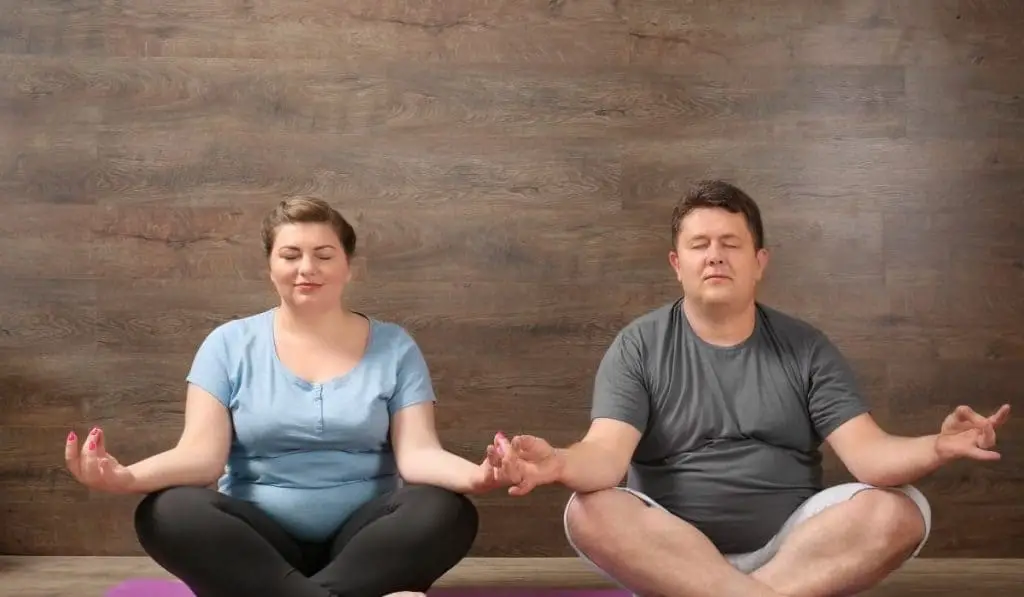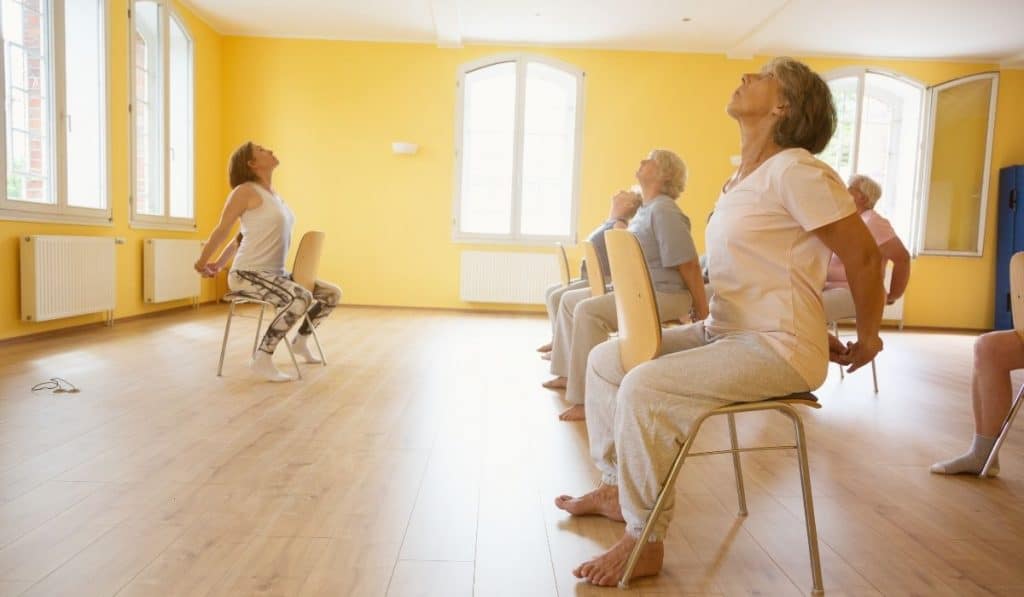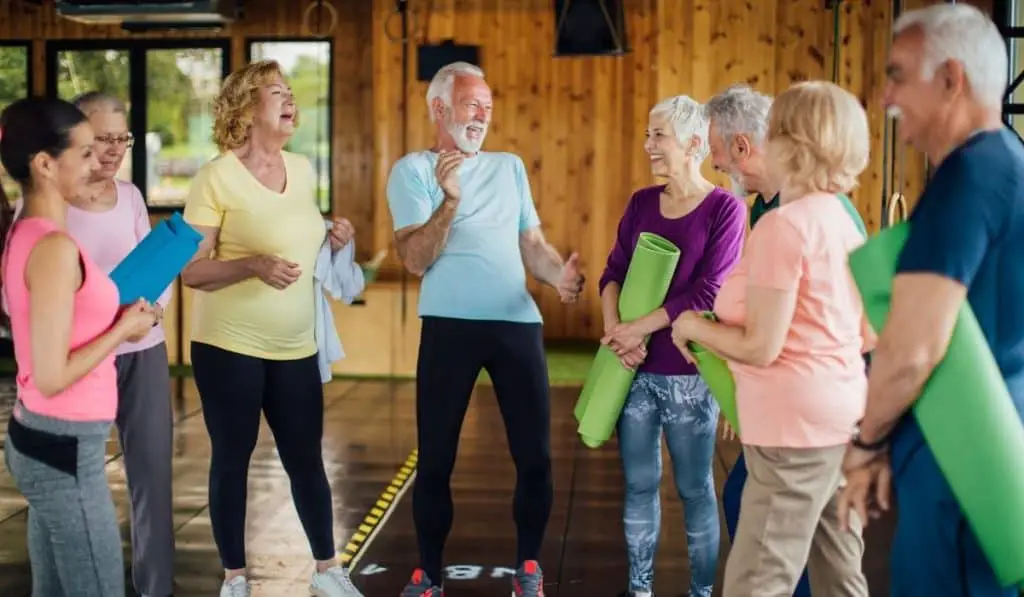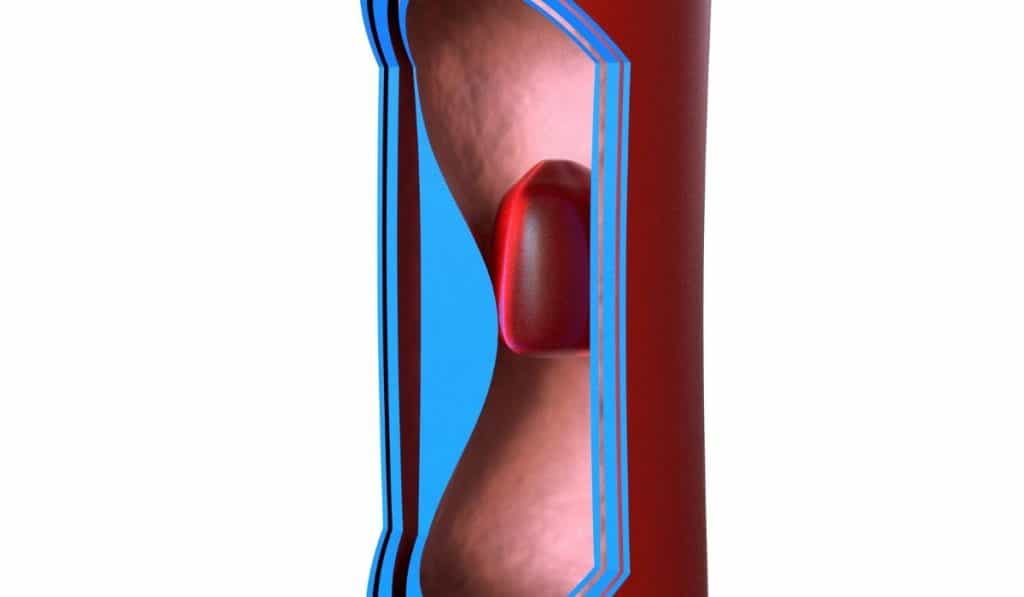One of the most basic precepts of yoga is that it is designed to accommodate everyone; whether you are young or elderly, vigorous or infirm, or anything else in-between, yoga will have a lace suited to your particular needs. A good example of this is the recent emergence of what’s known as chair yoga. What’s it all about?
Chair yoga is a type of yoga with typical modern yoga characteristics, although the postures here are adapted for practice while seated or with a chair’s support. It was developed to safely accommodate the elderly, infirm, or any who might have difficulty participating in typical yoga sessions.
For a useful introduction to chair yoga, in this post, we will be going into its origins, benefits, and practice so that you may gauge whether it might be a suitable option for you or someone close to you. We will explore in detail some effective poses anyone can implement into their daily routine as well. Let’s jump right in.
What Is Chair Yoga?
Not so far back in the year 1982, a yoga instructor by the name of Lakshmi Voelker-Binder noticed that one of her students was having a very hard time executing the floor poses that made up part of her sessions. The student in question was only in her thirties, but she suffered from arthritis, severely limiting her mobility.
A good teacher that she was, Lakshmi sought to find a way to help her student out, and the idea to have her execute the various asanas, or postures, while seated in a chair came to her. Thus chair yoga was born to this world.
The idea of using props to facilitate physical yoga practice was not a new one by any means, with yoga types such as Iyengar yoga implementing various props to help students achieve anatomically proper or deeper poses. Still, Lakshmi’s innovation was to have a chair be a central facilitator for modified versions of the textbook yoga poses.
Very quickly, the idea of ‘yoga while you sit’ gained traction across the yoga-practicing world. The general public realized that it not only made yoga accessible to those with debilitating conditions but to anyone and everyone who found it difficult to practice typical yoga for whatever reasons.
Who Is Chair Yoga For?
Without exaggeration, chair yoga can be suitable for anyone as it is specifically designed to be as accommodating as possible while offering us the benefits of typical yoga. Practically speaking, however, chair yoga is mostly recommended for those who would struggle to keep up with regular yoga sessions.
The classes of people falling under this umbrella are varied and numerous, including:
- Beginners completely new to yoga
- Those with physical limitations occasioned by illness or injury
- The elderly
- The overweight
- Those leading sedentary lifestyles
- Those simply looking for a gentler, more accessible yoga type to participate in.
The modern world we live in today has made chair yoga as a health and wellness option particularly relevant to certain groups among those mentioned above, as their numbers have grown and continue to grow exponentially over the years. Let’s touch briefly on them before getting on with things.
Those Leading Sedentary Lifestyles
Nowadays, a gym membership doesn’t quite cut it for those hoping to keep trim, fit, and healthy. All the gyms are closed, anyway. Modern life has seen great proportions of our working populations confined to their desks for the better part of their day-to-day lives.
Many heads out of their places of work exhausted, spend an hour in traffic, and finally get home only to flop down in front of the television or computer. Many who might otherwise have the motivation and inclination to lead more active lifestyles simply lack the opportunity to do so.
The next day only marks the start of the same cycle. Keeping up such a lifestyle for years on end places us at risk of developing lifestyle diseases such as hypertension, diabetes, and heart disease, not to mention the mental issues that prey on us such as depression, anxiety, stress, and so on.
The Overweight
The obesity epidemic that the United States has been grappling with is quickly becoming a worldwide pandemic as Western eating habits become the norm in other developed and developing nations around the world.

Diets heavy on carbohydrates, fats, salt, and sugars offer high caloric value, but the types of food sources we derive them are increasingly lacking in nutritional value. Processed foods, sodas, chips, and Starbucks calorie bombs provide quick and easy alternatives to wholesome foods.
The resultant burgeoning waistlines in evidence in our populations not only make us susceptible to weight-related afflictions such as diabetes, heart disease, and more but make physical weight-loss interventions more challenging.
The Elderly
Aging is a natural fact of life. No one should feel ashamed of living a full life as it is a gift many are not granted. However, that said, advanced age comes with its own set of unique challenges that younger generations can only wait and find out about.

For many, as they age, joints wear out, muscles weaken, immune systems fail, bones weaken, and more takes place as the wear and tear of a life lived begins to make its effects known. Chair yoga offers a way to counteract these effects safely – gentle yet highly effective.
It will be useful to explore the various specific ways in which chair yoga makes a positive impact on the lives of those who practice it to shed greater light on exactly why these groups of people are considered to be the most suited to chair yoga.
We will also see how these benefits extend beyond overcoming limitations but go on to increase the practitioners’ quality of life whoever they may be and whatever their particular circumstances.
Benefits of Chair Yoga
The benefits to be enjoyed by those participating actively in chair yoga and making it a part of their routines are numerous and highly varied. Let’s touch briefly on the most relevant and significant ones. Even though the average, healthy, and relatively fit person will also benefit from many of the points listed, we’ll pay special attention to the groups mentioned above, especially the elderly.
Increased Flexibility
Flexibility is a key element of mobility or the ability to move around and carry out our day to day activities with ease. Those struggling with their weight and the elderly, more significantly, will often struggle with their flexibility.
The reason why we get slower with age isn’t a mystery. Our bodies gradually become less adept at executing all the moves we find so easy in our care-free youth. It is all in part with nature and nothing to be worried about. This does not mean that you have to sit back and let time take its toll on you. Chair yoga can help.
Chair yoga practice can help lengthen the connective tissues and ligaments that allow for a wide range of motion in our joints. The net gain will be an improvement in the practitioner’s quality of life.
Increased Strength
Many people are rather skeptical when told that yoga is a good way to build one’s strength and find it hard to believe that chair yoga can help us achieve much in this area. The fact of the matter is that chair yoga can have the same muscle-building effects as bodyweight training, which is where a person uses their own body’s weight to train rather than barbells or what weightlifters use.
The elderly will stand to benefit significantly from such gains in strength. It will allow them to be more independent as they carry out their daily activities. You won’t need to call in the neighbor to take the trash out to the curb.
Additionally, it will help them withstand the potentially dangerous outcomes of falling as their bodies will be more durable and impervious to minor bumps and falls.
Increased Balance and Stability
Chair yoga will help you improve your stability and balance by strengthening the muscles that work to keep us upright and our feet firmly on the ground. Our core muscles, legs, spinal column, and various additional muscles and muscle groups work in conjunction to keep us on an even keel whether we are standing still or in motion.

Few practices will serve to exercise and activate these muscles as effectively as yoga.
Specifically speaking of the elderly, good balance and stability becomes critically important as they advance in age. According to some studies, at least 50% of the elderly above the age of 80 experience a fall annually. This can have grave consequences for them in their condition.
Weight Management
While we wouldn’t go so far as to say that chair yoga is the equivalent of a ten-kilometer run in terms of its ability to melt away the fat, it can serve as a method of keeping runaway waistlines in check. Aside from the calories one burns as they are engaging in their chair yoga, by activating and strengthening various muscle groups in our bodies, we encourage our metabolic system to burn calories more actively, even while we sleep.

The process of metabolism, by which our bodies convert the calories we consume into useful energy, is constantly taking place in our muscles even while inactive. This process is stimulated by encouraging muscle building and activation, thereby helping us keep excess weight off.
If you want to know more about weight loss and Yoga, take a look at our article: Does Yoga Help With Weight Loss?
Increased Stamina
We all get tired, but persistent lack of energy or fatigue is more commonly experienced by the groups we mentioned earlier. Chair yoga will help you boost your energy levels by raising your heart rate in much the same way that a session of cardio exercise does.
Increased blood flow throughout the body translates to more oxygen and nutrients being delivered to the muscles of our body, which rely on these inputs for energy production. The result will be a heightened level of physical energy reserves and availability, which will allow for a more active, vigorous lifestyle, which is the best kind of living.
Improved Mood and Sense of Wellbeing
Physical activity is a powerful means to heightened senses of physical and emotional well being. Chair yoga works in this way as well as stimulates the production of serotonin in our brains. This is otherwise known as the feel-good hormone due to the role it plays in mood regulation.
Old age, sedentary living, and being overweight all come with contributory factors that make these demographic groups more prone to depression and general malaise. Chair yoga can offer them an effective way to dispel the dark moods and help them get their smiles back.
Alleviation of Insomnia
Insomnia is characterized by the inability to sleep well, either due to trouble falling asleep in a reasonable time or experiencing low quality, interrupted sleep. One wakes up feeling groggy, cranky, and unrested.

There are countless pills and remedies out there offering to help people with this particular problem, but chair yoga can be successfully implemented to deal with it at no cost and with nothing but positive side effects to contend with.
Practicing chair yoga will stimulate the release of a hormone known as melatonin in our bodies, and this is the hormone that regulates our sleeping and waking schedules. It also works by relaxing us and helping us manage our stress and anxiety levels, which are also contributing factors in many cases of insomnia.
If you want to dig deeper into the subject, take a look at this article about yoga and sleep.
Provides Socialization Opportunities
Participating in group activities such as chair yoga classes can become a great avenue for people to meet one another in a world where individuals are increasingly isolated. The elderly are especially hard hit by modern society’s isolation, where the binds of the nuclear family are not as strong or valued as they once were.

To compound the issue for this demographic in particular, they may be dealing with the grief that comes with losing their partners, as unfortunately becomes more common as we advance in age. Chair yoga sessions can provide a great way to engage with others in a positive setting.
As we understand human beings as inherently social creatures, socializing is generally accepted as being among the best methods of dealing with depression or the general loneliness that comes with isolation.
Stress and Anxiety Management
Modern living comes with various unavoidable stressors, no matter who we are or what we do. Dealing with stress and anxiety has become a billion-dollar industry in the United States as everyone seeks a remedy to their problem.

Chair yoga may offer a smile, an all-natural solution for those willing to give it a try. The hormone responsible for the feelings of stress and anxiety that make so many people’s lives difficult is cortisol. It is also known as the stress hormone. Engaging in chair yoga can heal your body and reduce the amount of this stress hormone in your brain and bloodstream, thus alleviating your anxiety and lifting your spirits.
Prevention of Blood Clot Formation (Atherothrombosis)
Yoga has a surprisingly powerful effect on reducing our risks of developing blood clots that might cause great harm, as to how it happens with victims of diabetes and those who suffer from strokes. This occurs due to its effect as a blood-thinning agent, which is one-way clots are prevented from forming.

Interestingly enough, chair yoga saw its first burst of mainstream appeal among long-distance travelers, who would regularly spend long hours cramped in lanes as they crisscrossed through the skies. It gave them an ideal method of keeping.
A Great Introduction to Traditional Yoga
Plenty of people with an interest in traditional yoga practice are somewhat intimidated at first by all the talk of upside-down canines, solar handshakes, and whatnot. A gentle introduction to yoga and what it’s all about can serve to bridge the gap for these individuals and allow them to properly discover what may turn out to be the best decision of their lives.
Chair yoga can be just such an introductory measure. It incorporates the major elements of physical yoga in a very gentle and gradual way, allowing participants to explore the limits of their own potential at their own pace in an environment that is noncompetitive yet still thoroughly educational. It will make the transition to more traditional yoga classes much less daunting.
Effective Chair Yoga Poses
As we mentioned at the top of the article, chair yoga basically takes the traditional poses of standard yoga types. It adapts them for suitability with the aid of a chair. This is to provide additional support and ensure the safety of the practitioner.
Here are a few good examples of such techniques. You can easily do them seated at your place of work, at home, or as part of your chair yoga class.
Gomukhasana – Cow Face Pose
This is a pose that works very well for those suffering from tight hips and shoulders to help restore their upper and lower body mobility.
- While seated in your chair, cross your legs in such a way that your knees end up stacked one on top of the other. Your right knee should be the upper one.
- Raise your right arm towards the ceiling and crook your elbow such that the palm of your hand lies flat along the line of your spine.
- Raise your other arm, but this time, bending it back behind you so that it reaches your spine as well, but from under.
- The goal is to try and get your fingers close enough that they can clas each other behind you.
- Maintain an upright posture as your hands are held in this attitude for the duration of ten breaths.
- Release the clasp gently and repeat the same procedure for the opposite side of your body.
Urdhva Hastasana – Upward Hand Pose
A lack of energy can suddenly put a damper on a weary office worker’s day, where they don’t really have many options when it comes to revitalizing diversions or activities. This simple chair pose is an effective way of giving yourself a handy boost of energy.
- While seated, take in a deep breath of air and raise both of your arms upwards over your head, keeping them shoulder-width apart and with the palms facing each other.
- Lower them back down as you release the breath you took in.
- Repeat this procedure five to ten times, or you could alternatively hold your arms extended pose for three to five deliberate breaths before lowering them once more as you exhale.
Eka ada Rajakapotasana – Chair Pigeon Pose
Spending inordinate amounts of time seated in an office chair working through a stressful, busy day of work is a perfect recipe for mobility dysfunctions. Some of the areas most affected by this lifestyle are the hips, which begin to lose much of their mobility. This pose is aimed at helping the practitioner regain their hip mobility.
- While seated, raise one foot up and over the other leg so that one ankle is resting over the thigh of the other leg’s thigh. Your knee should be bent at a right angle.
- By externally rotating the femur of the raised leg, you should feel stretching pressure being exerted along your glute and hip’s rear side.
- To move deeper into the pose, apply moderate, measured pressure downwards onto the raised knee.
- Hold this posture for five to ten breaths before switching sides and repeating the process.
Marjaryasana-Bitilasana – Seated Cat-Cow Pose
This is a favorite pose for those seeking to promote spine health. It works in the principle that moving the spine actively and fully through its extension and tension motions helps maintain optimal levels of mobility by encouraging the release and spread of spinal fluid over the joints.
- Position yourself to be sitting upright at the very edge of your seat with the soles of your feet lying flat against the ground.
- Take in a deep breath and arch your back as you gently allow your head to drop backwards so that you feel your throat opening up and extending.
- Release your breath as you now flex your spine in the opposite direction, drawing in your navel towards your spinal column and shifting your shoulder blades away from one another.
- Perform a few of these rounds, being careful to keep them in sync with your breathing.
Bharadvajasana Spinal Twist
Digestive troubles, bloating, and indigestion are some of the most common complaints experienced by those who are overweight, the elderly, and office workers. Twists such as these are highly effective in promoting efficient digestion and offering some detoxifying benefits. This pose will also help you decompress your spinal column as well as strengthen your core abdominal muscles and obliques.
- Take your seat in your chair, but sideways rather than facing forward as usual.
- Take in a deep breath and straighten up so that you’re sitting as tall as you comfortably can. You should feel your pelvic floor being engaged as your breast bone lifts. Be careful not to hyperextend your back, however.
- As you exhale, turn your head, shoulders, and ribcage to the side so that you end up looking over your own shoulder.
- Take in five to ten deep breaths while holding this pose.
- Return to your initial posture and repeat the same steps on the other side of your body.
Chair Supported Warrior II to Reverse Warrior
This is a highly effective pose to be used by those seeking to strengthen their core muscles, encourage leg muscle growth, and improve spinal alignment.
- Position yourself so that you are seated at the edge of your seat. Have your right leg line up with your chair in such a way that the inner part of your thigh lies parallel to the edge of the chair.
- You’ll be seated as though you are halfway falling out the side of your chair.
- Extend your left leg outwards away and to the side of your chair and place it in such a way that its arch will line up with the heel of your right foot.
- Bring pressure to bear on the ground through the soles of both feet to activate both legs’ muscles. Pull your navel inwards towards your spine as you stack your vertebrae and draw your breastbone upwards to open up your chest.
- With your palms facing towards the ground, stretch both arms out to your sides and hold them parallel to the ground.
- Let your shoulders relax and hold the pose for a cycle of breaths.
- You can move into the reverse warrior pose by withdrawing your left hand back down towards the outer part of your thigh while your right arm is extended up and over your head to extend your waistline and impose a deep side stretch on your body.
Final Thoughts
We can clearly see that chair yoga can offer real value to anyone willing to give it a try, especially as it is specifically designed to accommodate any and all levels of ability, physical fitness, and general state of being. Even those who consider themselves to be relatively fit and healthy will still gain something from this practice. It is worth giving a shot.
Sources
- Wikipedia: Therapeutic Yoga
- Wikipedia: Chair Yoga
- Your Lifestyle Options: Chair Yoga Poses and Benefits
- Yogapedia: What is Chair Yoga?
Sitasyoga.com is a participant in the Amazon Services LLC Associates Program, an affiliate advertising program designed to provide a means for sites to earn advertising fees by advertising and linking to Amazon.com. We also participate in other affiliate programs which compensate us for referring traffic.






